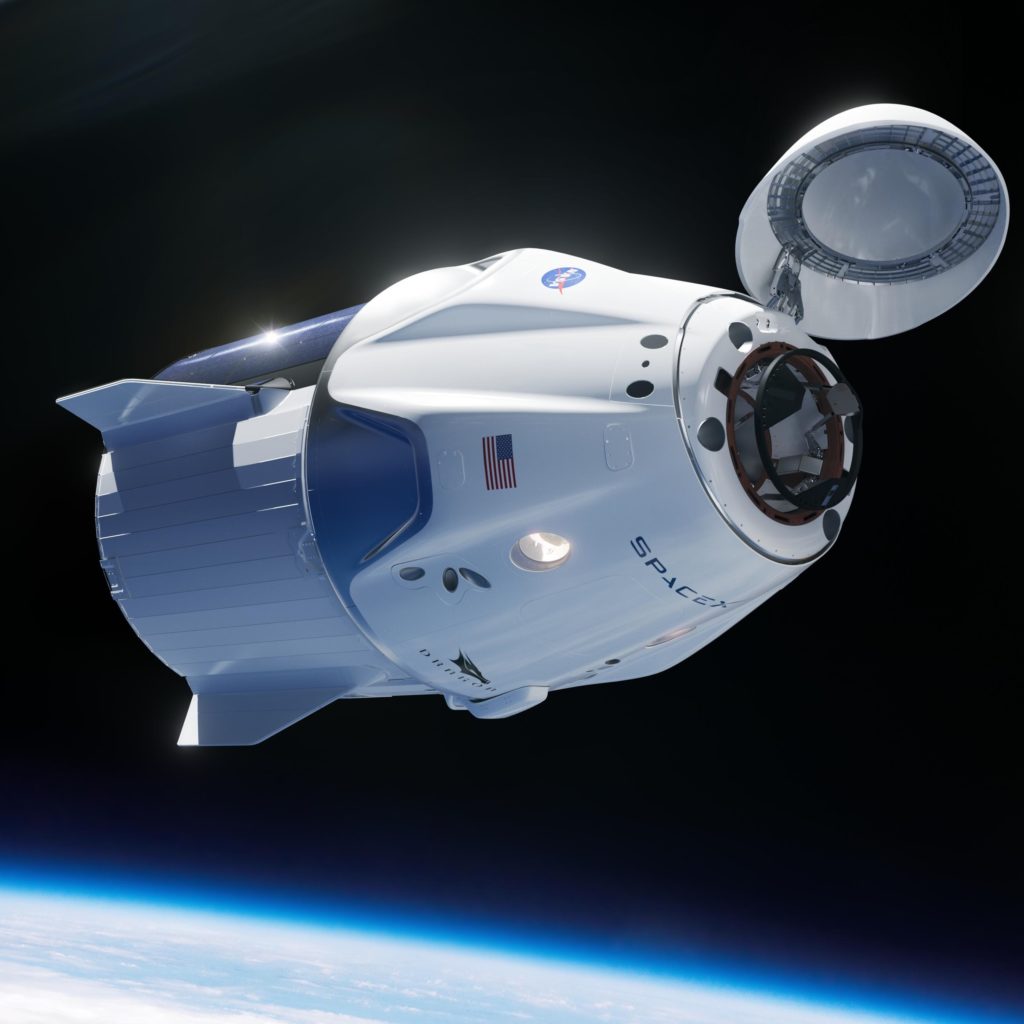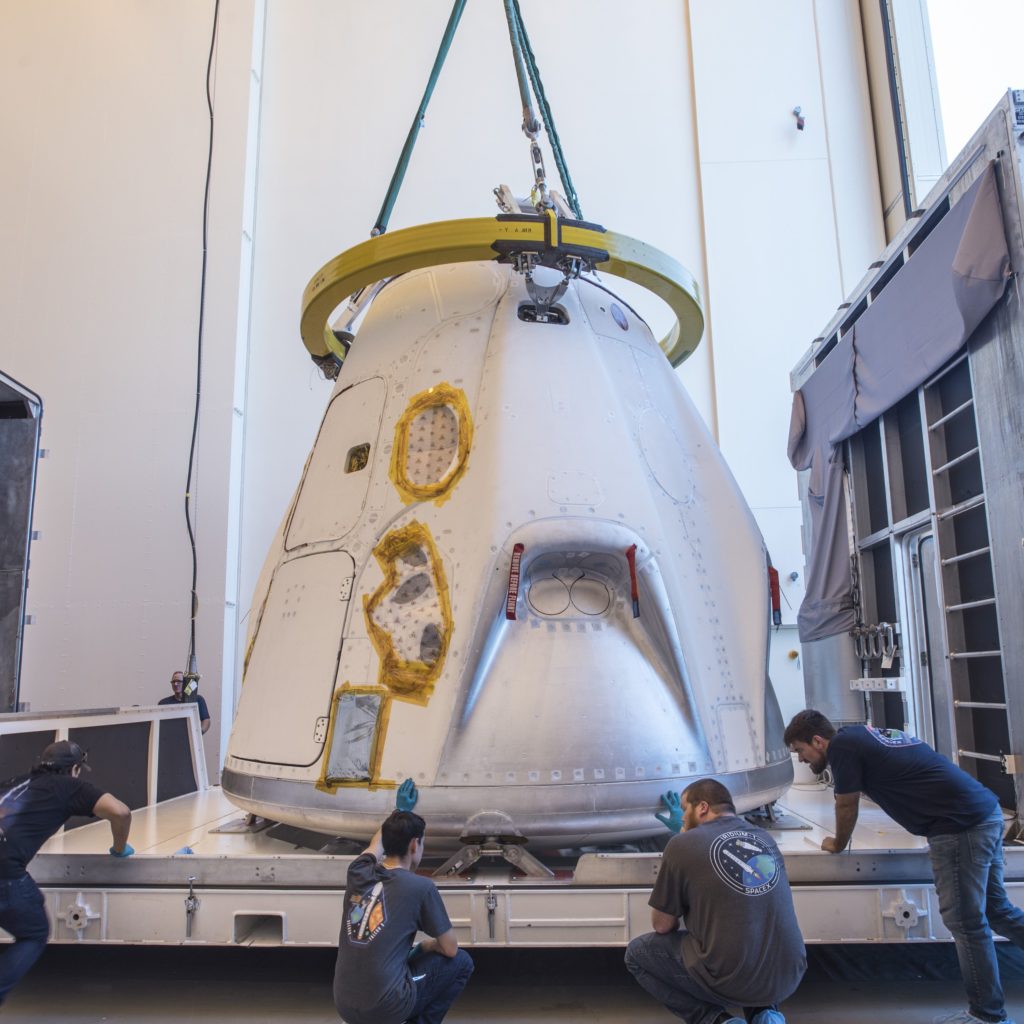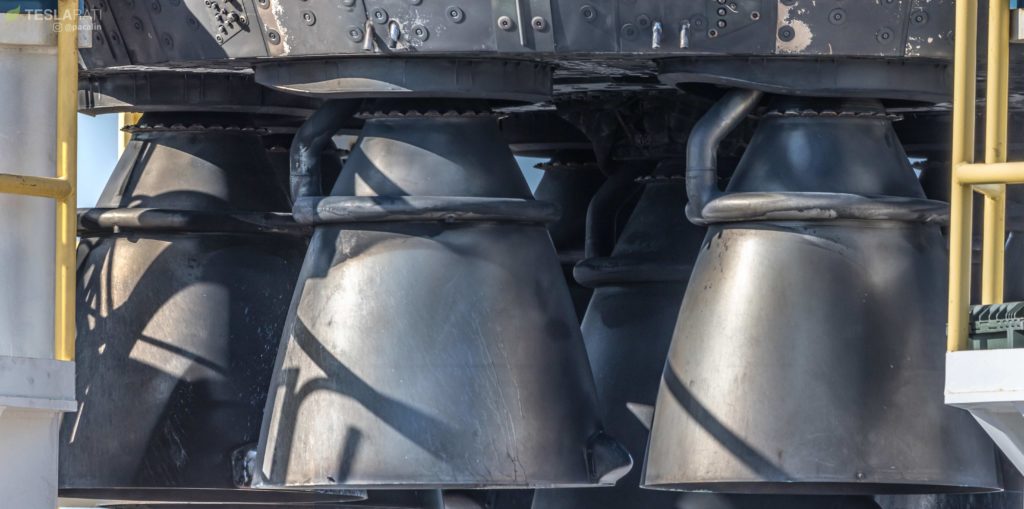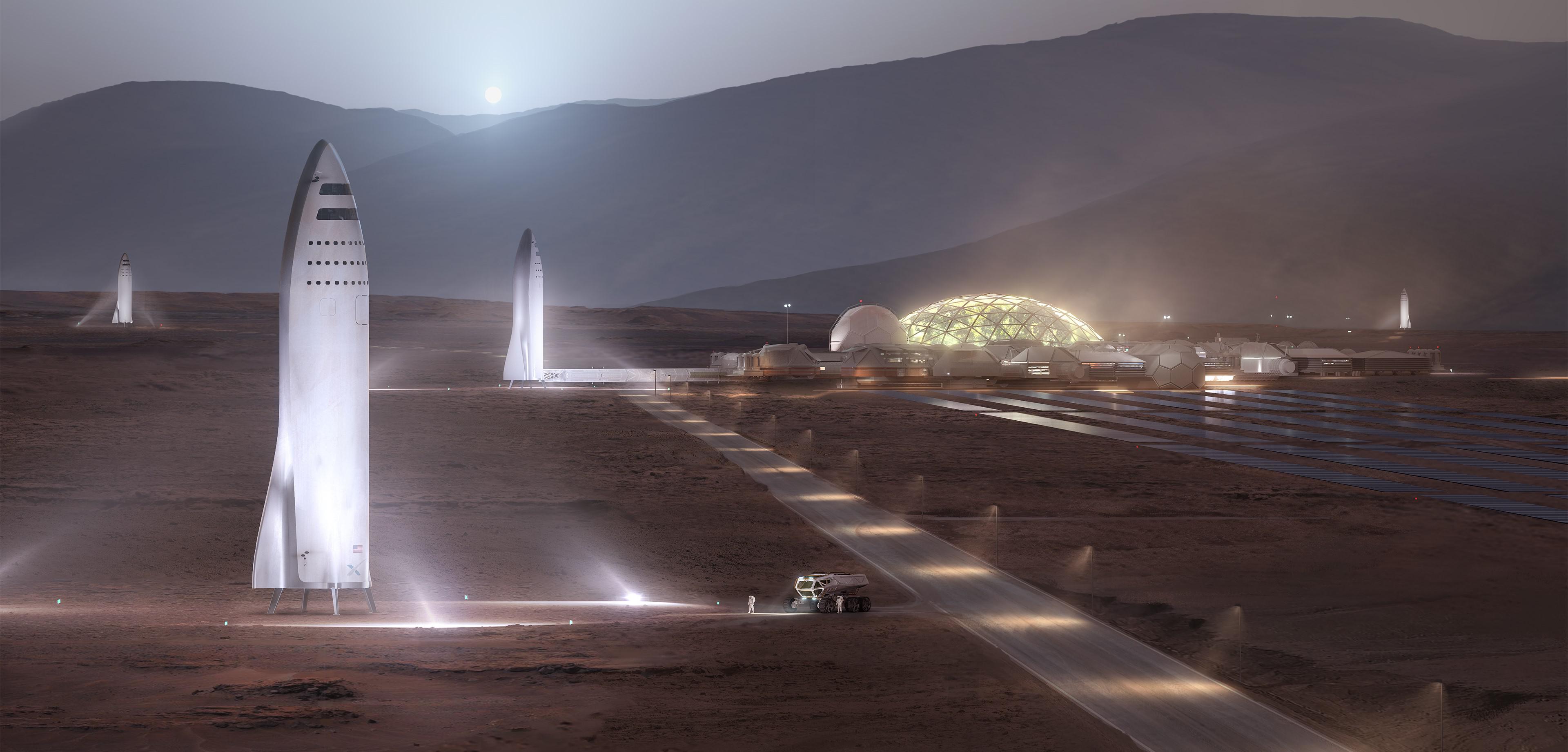

News
SpaceX is searching for BFR landing sites for early 2020s Mars missions
SpaceX Principal Mars Development Engineer Paul Wooster gave a surprise talk at a February 2018 meeting of the Mars Exploration Program Analysis Group, where he provided a brief overview of SpaceX’s plans for the Red Planet, ranging from prospective landing sites for the company’s first missions there to the possibility of including significant secondary payloads on BFR and Falcon Heavy launches.
Wooster reiterated that SpaceX is still targeting the early 2020s for its first true BFR missions to Mars, perhaps less than five years from today. He further discussed prospective landing locations on the planet, emphasizing a need for a smooth landing site, easy access to on or near-surface water ice, and a preference for the warmer and more forgiving mid and low (equatorial) latitudes. A huge amount of work admittedly remains before the company before those missions are even remotely conceivable, especially missions with crew onboard.
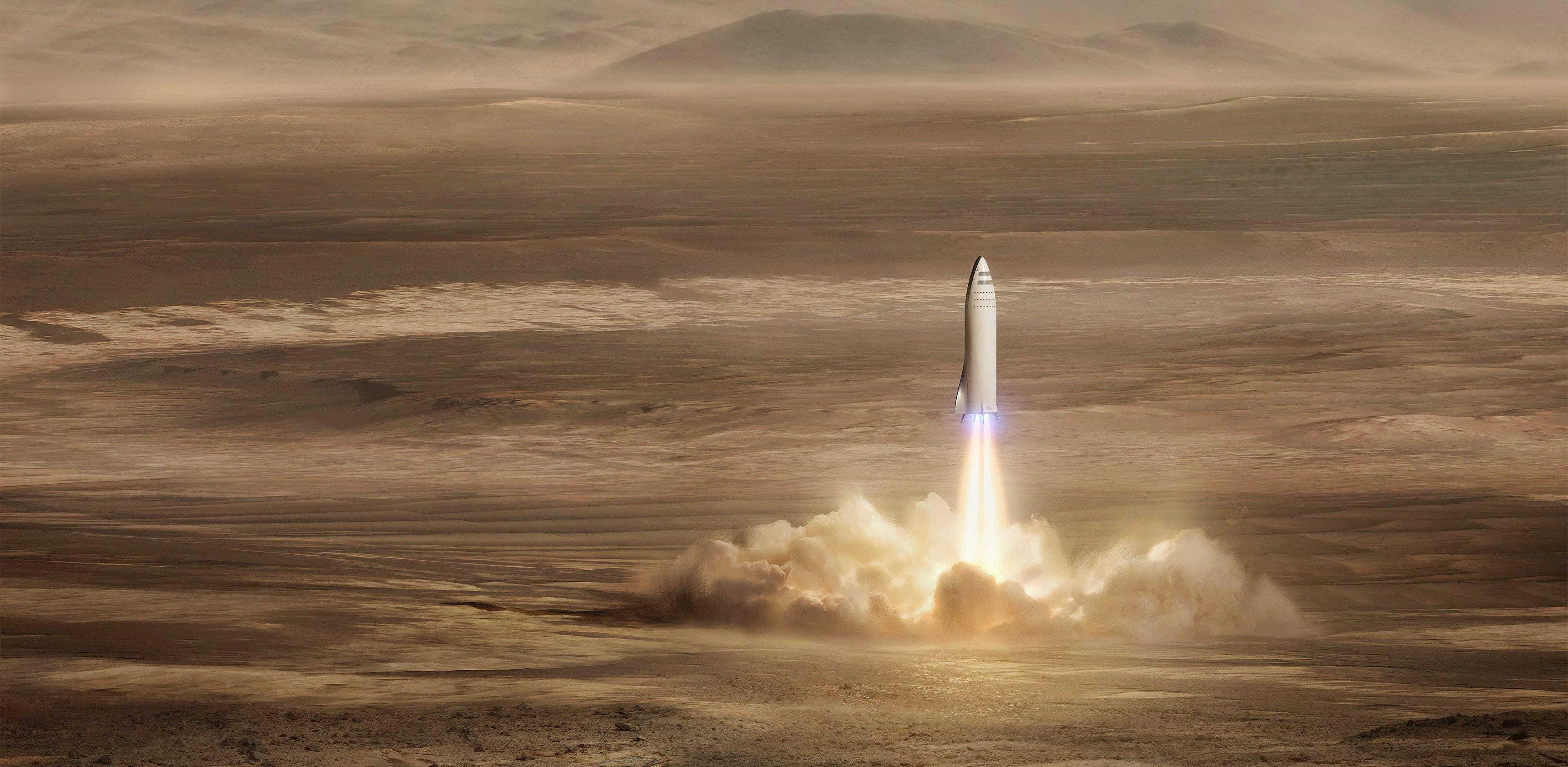
If/when SpaceX successfully debuts its Crew Dragon spacecraft and demonstrates the ability to reliably and safely transport humans to and from orbit, a huge amount of the risk currently innate in any long-term interplanetary transport and colony creation will be definitively retired, transforming several of the major problems at hand from clean-slate tech development to optimizing and scaling up functional first-generation designs and hardware.
Crew Dragon’s official uncrewed demonstration debut (DM-1) and perhaps the crewed demonstration follow-on mission (DM-2) will likely have real launch dates announced later this week in an August 3 NASA press conference. Reliable sources have pegged those dates around October-December for DM-1 and 3-6 months later for DM-2
- SpaceX’s gorgeous Crew Dragon capsule is nearing its own debut, likely before the end of 2018. (SpaceX)
- The first spaceworthy Crew Dragon capsule is already in Florida, preparing for its November 2018 launch debut. The same capsule will be refurbished and reflown as few as three months after recovery. (SpaceX)
- Note that Merlin 1D and prior Raptor prototypes both feature traditional single nozzles. (Pauline Acalin)
Nevertheless, SpaceX is demonstrably hard at work designing and building BFR‘s booster, spaceship, and tanker and is moving quickly in the direction of full-scale engineering and production. Much of that prototype manufacturing happens to be taking place in a temporary tent installed in a Port of Los Angeles parking lot near the end of 2017. According to one source engaged in the work there, SpaceX technicians and engineers have already begun rolling out preliminary materials and engineering samples of carbon composite structures and propellant tanks with the massive manufacturing tools (one known as a mandrel) temporarily housed inside.
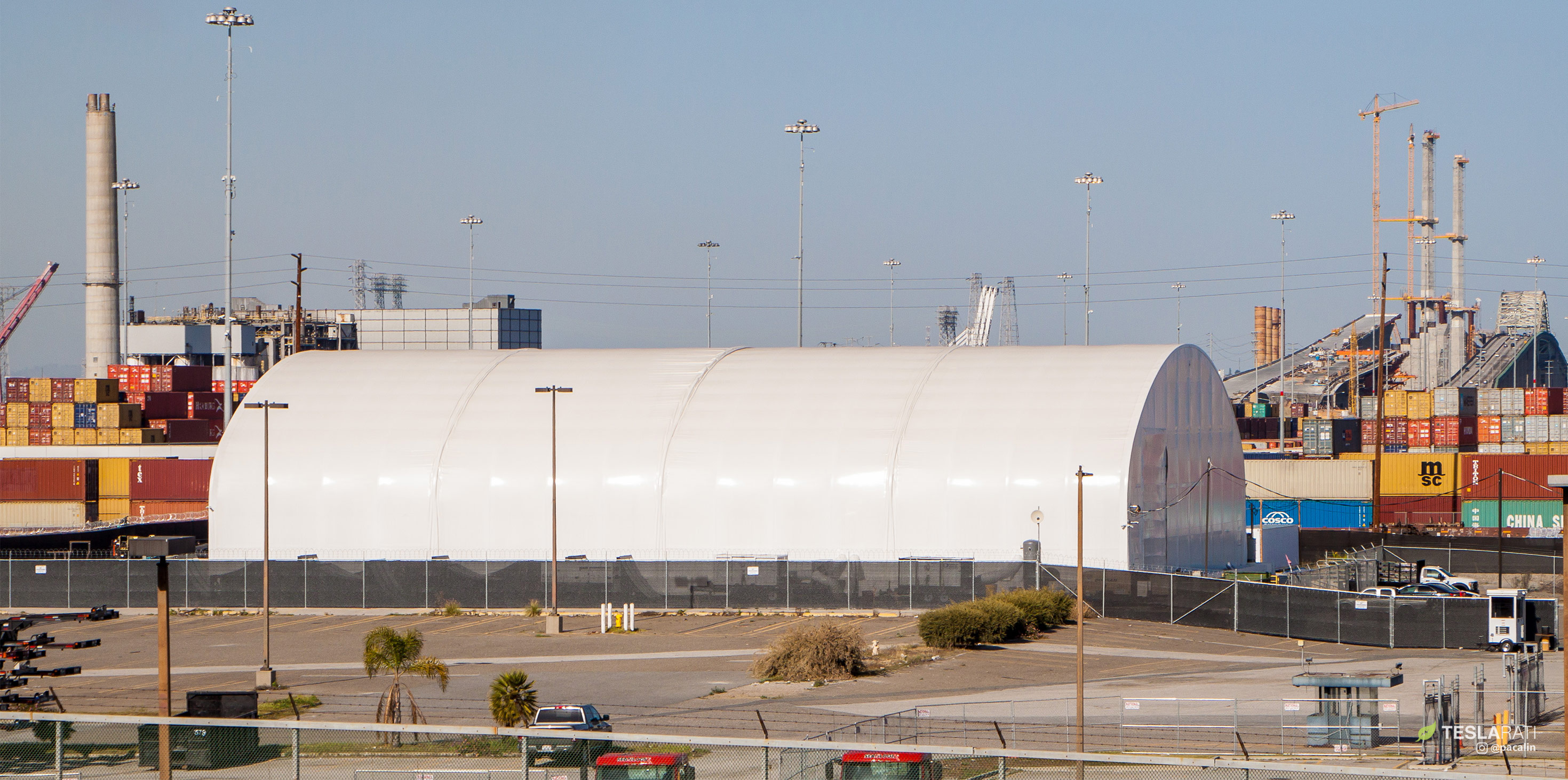
Just a few miles away, the company is busy preparing a construction site for a permanent BFR factory on a plot of Port of Los Angeles land known as Berth 240. The smaller Phase 1 of that BFR factory is expected to be completed roughly a year after construction begins, placing the inauguration of the dedicated facility sometime around the middle of 2019. Suborbital launches of the massive rocket’s upper stage spaceship are expected in 2019, while orbital launches of BFR are NET 2020.
Read the full summary of Mr. Wooster’s presentation below.
“A walk-on presentation was given by Paul Wooster of SpaceX which highlighted the recent successful test of the Falcon Heavy launch vehicle with its potentially very large payload capacity (100 metric tons). Using the Falcon Heavy and development of an even larger Big Falcon Rocket (BFR) launcher are the basis of their ambitious plans for the future exploration and colonization of Mars, potentially launching missions to Mars within the early 2020s. SpaceX’s current landing site candidates for Mars were shown, having been chosen to provide access to near-surface ice, few landing site hazards (such as large rocks), and enough space for potentially growing a sizeable outpost. The ice sites are in high mid-latitudes and the search for lower latitude candidates, which are preferred, continues. Previously, MEPAG had been told that SpaceX could transport for-fee payloads to the Mars surface. In response to questions, Paul iterated that there is likely to be capacity for secondary payloads on either the Falcon Heavy or BFR launchers, although details remain to be negotiated once the launcher capabilities are firmly established.”
For prompt updates, on-the-ground perspectives, and unique glimpses of SpaceX’s rocket recovery fleet (including fairing catcher Mr Steven) check out our brand new LaunchPad and LandingZone newsletters!
News
Tesla cleared in Canada EV rebate investigation
Tesla has been cleared in an investigation into the company’s staggering number of EV rebate claims in Canada in January.

Canadian officials have cleared Tesla following an investigation into a large number of claims submitted to the country’s electric vehicle (EV) rebates earlier this year.
Transport Canada has ruled that there was no evidence of fraud after Tesla submitted 8,653 EV rebate claims for the country’s Incentives for Zero-Emission Vehicles (iZEV) program, as detailed in a report on Friday from The Globe and Mail. Despite the huge number of claims, Canadian authorities have found that the figure represented vehicles that had been delivered prior to the submission deadline for the program.
According to Transport Minister Chrystia Freeland, the claims “were determined to legitimately represent cars sold before January 12,” which was the final day for OEMs to submit these claims before the government suspended the program.
Upon initial reporting of the Tesla claims submitted in January, it was estimated that they were valued at around $43 million. In March, Freeland and Transport Canada opened the investigation into Tesla, noting that they would be freezing the rebate payments until the claims were found to be valid.
READ MORE ON ELECTRIC VEHICLES: EVs getting cleaner more quickly than expected in Europe: study
Huw Williams, Canadian Automobile Dealers Association Public Affairs Director, accepted the results of the investigation, while also questioning how Tesla knew to submit the claims that weekend, just before the program ran out.
“I think there’s a larger question as to how Tesla knew to run those through on that weekend,” Williams said. “It doesn’t appear to me that we have an investigation into any communication between Transport Canada and Tesla, between officials who may have shared information inappropriately.”
Tesla sales have been down in Canada for the first half of this year, amidst turmoil between the country and the Trump administration’s tariffs. Although Elon Musk has since stepped back from his role with the administration, a number of companies and officials in Canada were calling for a boycott of Tesla’s vehicles earlier this year, due in part to his association with Trump.
News
Tesla Semis to get 18 new Megachargers at this PepsiCo plant
PepsiCo is set to add more Tesla Semi Megachargers, this time at a facility in North Carolina.

Tesla partner PepsiCo is set to build new Semi charging stations at one of its manufacturing sites, as revealed in new permitting plans shared this week.
On Friday, Tesla charging station scout MarcoRP shared plans on X for 18 Semi Megacharging stalls at PepsiCo’s facility in Charlotte, North Carolina, coming as the latest update plans for the company’s increasingly electrified fleet. The stalls are set to be built side by side, along with three Tesla Megapack grid-scale battery systems.
The plans also note the faster charging speeds for the chargers, which can charge the Class 8 Semi at speeds of up to 1MW. Tesla says that the speed can charge the Semi back to roughly 70 percent in around 30 minutes.
You can see the site plans for the PepsiCo North Carolina Megacharger below.

Credit: PepsiCo (via MarcoRPi1 on X)

Credit: PepsiCo (via MarcoRPi1 on X)
READ MORE ON THE TESLA SEMI: Tesla to build Semi Megacharger station in Southern California
PepsiCo’s Tesla Semi fleet, other Megachargers, and initial tests and deliveries
PepsiCo was the first external customer to take delivery of Tesla’s Semis back in 2023, starting with just an initial order of 15. Since then, the company has continued to expand the fleet, recently taking delivery of an additional 50 units in California. The PepsiCo fleet was up to around 86 units as of last year, according to statements from Semi Senior Manager Dan Priestley.
Additionally, the company has similar Megachargers at its facilities in Modesto, Sacramento, and Fresno, California, and Tesla also submitted plans for approval to build 12 new Megacharging stalls in Los Angeles County.
Over the past couple of years, Tesla has also been delivering the electric Class 8 units to a number of other companies for pilot programs, and Priestley shared some results from PepsiCo’s initial Semi tests last year. Notably, the executive spoke with a handful of PepsiCo workers who said they really liked the Semi and wouldn’t plan on going back to diesel trucks.
The company is also nearing completion of a higher-volume Semi plant at its Gigafactory in Nevada, which is expected to eventually have an annual production capacity of 50,000 Semi units.
Tesla executive teases plan to further electrify supply chain
News
Tesla sales soar in Norway with new Model Y leading the charge
Tesla recorded a 54% year-over-year jump in new vehicle registrations in June.

Tesla is seeing strong momentum in Norway, with sales of the new Model Y helping the company maintain dominance in one of the world’s most electric vehicle-friendly markets.
Model Y upgrades and consumer preferences
According to the Norwegian Road Federation (OFV), Tesla recorded a 54% year-over-year jump in new vehicle registrations in June. The Model Y led the charge, posting a 115% increase compared to the same period last year. Tesla Norway’s growth was even more notable in May, with sales surging a whopping 213%, as noted in a CNBC report.
Christina Bu, secretary general of the Norwegian EV Association (NEVA), stated that Tesla’s strong market performance was partly due to the updated Model Y, which is really just a good car, period.
“I think it just has to do with the fact that they deliver a car which has quite a lot of value for money and is what Norwegians need. What Norwegians need, a large luggage space, all wheel drive, and a tow hitch, high ground clearance as well. In addition, quite good digital solutions which people have gotten used to, and also a charging network,” she said.
Tesla in Europe
Tesla’s success in Norway is supported by long-standing government incentives for EV adoption, including exemptions from VAT, road toll discounts, and access to bus lanes. Public and home charging infrastructure is also widely available, making the EV ownership experience in the country very convenient.
Tesla’s performance in Europe is still a mixed bag, with markets like Germany and France still seeing declines in recent months. In areas such as Norway, Spain, and Portugal, however, Tesla’s new car registrations are rising. Spain’s sales rose 61% and Portugal’s sales rose 7% last month. This suggests that regional demand may be stabilizing or rebounding in pockets of Europe.
-

 Elon Musk2 weeks ago
Elon Musk2 weeks agoTesla investors will be shocked by Jim Cramer’s latest assessment
-

 Elon Musk2 days ago
Elon Musk2 days agoxAI launches Grok 4 with new $300/month SuperGrok Heavy subscription
-

 Elon Musk4 days ago
Elon Musk4 days agoElon Musk confirms Grok 4 launch on July 9 with livestream event
-

 News1 week ago
News1 week agoTesla Model 3 ranks as the safest new car in Europe for 2025, per Euro NCAP tests
-

 Elon Musk2 weeks ago
Elon Musk2 weeks agoA Tesla just delivered itself to a customer autonomously, Elon Musk confirms
-

 Elon Musk1 week ago
Elon Musk1 week agoxAI’s Memphis data center receives air permit despite community criticism
-

 News2 weeks ago
News2 weeks agoXiaomi CEO congratulates Tesla on first FSD delivery: “We have to continue learning!”
-

 News2 weeks ago
News2 weeks agoTesla sees explosive sales growth in UK, Spain, and Netherlands in June

